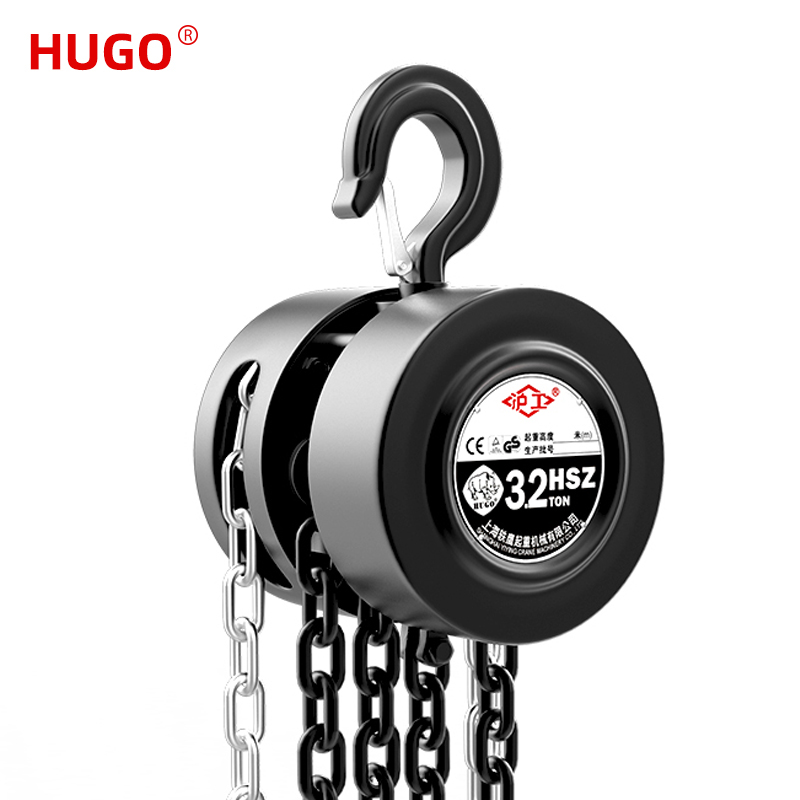Understanding Chain Blocks: Setting Them Apart from Other Lifting Equipment
2024-03-04
Introduction:
In the realm of material handling and lifting operations, various tools and equipment are employed to safely move heavy loads. Among these, chain blocks stand out as versatile and reliable devices that find application in numerous industries. In this blog post, we'll delve into the essence of chain blocks, exploring their functionalities, features, and how they distinguish themselves from other lifting equipment.
What is a Chain Block?
A chain block, also known as a chain hoist or manual chain hoist, is a portable lifting device primarily designed for lifting and lowering heavy loads vertically. It consists of a hoist mechanism housed within a sturdy metal casing, with a chain looped around a pair of wheels or sprockets. The chain is attached to a lifting hook or load attachment point, allowing operators to raise or lower objects with precision and control.
Distinguishing Features of Chain Blocks:
1. Manual Operation: Unlike electric hoists or cranes powered by electricity or hydraulics, chain blocks are operated manually. This feature makes them highly versatile and suitable for use in environments where power sources may be limited or inaccessible.
2. Portability: Chain blocks are compact and lightweight, making them easily portable and ideal for use in confined spaces or remote locations. Their mobility allows for flexible deployment across various work sites without the need for extensive setup or infrastructure.
3. Precise Control: One notable advantage of chain blocks is the precise control they offer during lifting operations. Operators can manipulate the lifting speed and direction with ease, allowing for delicate positioning of loads and minimizing the risk of accidents or damage.
4. Robust Construction: Built to withstand rugged industrial environments, chain blocks are constructed from high-quality materials such as steel or alloy. This robust construction ensures durability and longevity, even under demanding working conditions.
5. Safety Features: Chain blocks are equipped with various safety features to enhance operator protection and prevent accidents. These may include overload protection mechanisms, friction clutch systems, and safety latches on lifting hooks to secure loads effectively.
How Chain Blocks Differ from Other Lifting Equipment:
1. Manual vs. Electric Operation: Chain blocks operate manually, requiring physical effort from operators to raise or lower loads. In contrast, electric hoists utilize electric motors for powered lifting, offering greater efficiency and ease of operation but requiring a stable power source.
2. Portability vs. Fixed Installation: Chain blocks are portable and can be easily transported between different work sites, making them suitable for temporary or ad-hoc lifting tasks. On the other hand, overhead cranes and fixed-position hoists are typically installed permanently in a specific location, offering greater lifting capacity but less flexibility.
3. Versatility vs. Specialization: Chain blocks are versatile tools that can handle a wide range of lifting applications, from light-duty tasks to heavy-duty industrial operations. In comparison, specialized lifting equipment such as gantry cranes or jib cranes are designed for specific tasks or industries, offering higher lifting capacities but limited flexibility.
Conclusion:
Chain blocks represent a fundamental yet indispensable tool in the realm of material handling and lifting operations. Their manual operation, portability, precise control, and robust construction set them apart from other types of lifting equipment, making them a preferred choice for various industries and applications. Whether used in construction, manufacturing, maintenance, or logistics, chain blocks continue to play a vital role in safely and efficiently moving heavy loads.



